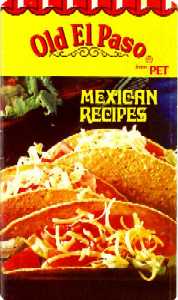CAI Cookbooks from The Swiss Colony
 The Swiss Colony has been shipping gourmet food gifts through the mail since their inception in 1926.
The Swiss Colony has been shipping gourmet food gifts through the mail since their inception in 1926.I don't know how many times a year they published a catalog, but one always arrived in the fall in time for the holiday season. Long ago I would spend many an hour carefully reading the descriptions and making lists of items to purchase, yet for some reason I never once actually placed an order. In retrospect, I believe that I was probably too impatient to wait for a package to be shipped. Get me to the mall as quickly as possible.
Along with meats, cheeses, nuts, candies and European pastries, their cheerful and festive catalog pages also offered an array of small gift items such as decorative containers, fondue sets, coffee mugs, corn poppers and the like.
I was glancing through their 1965 catalog, one that also acknowledges the company's 40th Anniversary, and noticed that one of the Cheese 'N Pastries gift sets was available with the option of ordering Gourmet Cookbooks along with it.

The cookbooks shown in the catalog picture are four from the Culinary Arts Institute series: The Cheese Cookbook, The Gourmet Foods Cookbook, The Italian Cookbook and The German and Viennese Cookbook. I guess the thinking was that these particular titles complemented their food gifts.
Pkg. 494 - Cheese 'N Pastries only $3.20
Pkg. 463 - with Gourmet Cookbooks $5.25
Fifty cents apiece for the cookbooks. Not a bad deal, and about the average price that they sold for in the stores. I wonder if any of the CAI cookbooks I have accumulated along the way originally came from one of these gift sets.
The Swiss Colony is still family-owned and still located in Monroe, Wisconsin. Besides mail order, they now take orders over the phone and on the Internet.
These days I'm content to shop online and wait for my packages to arrive at my doorstep. The efficiency and versatility of online shopping appeals to me. Whether it's because I'm older and less impatient or that traffic and crowds now annoy me, I don't know.
But I do know that The Mailman is my Friend.

